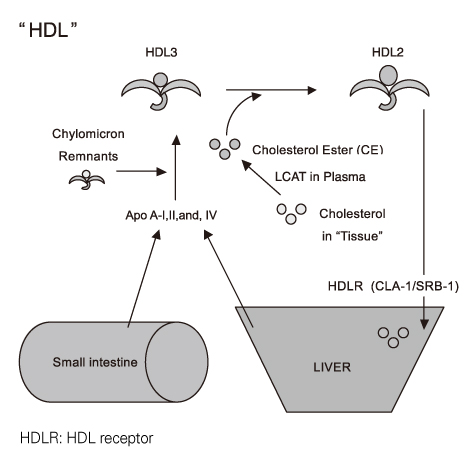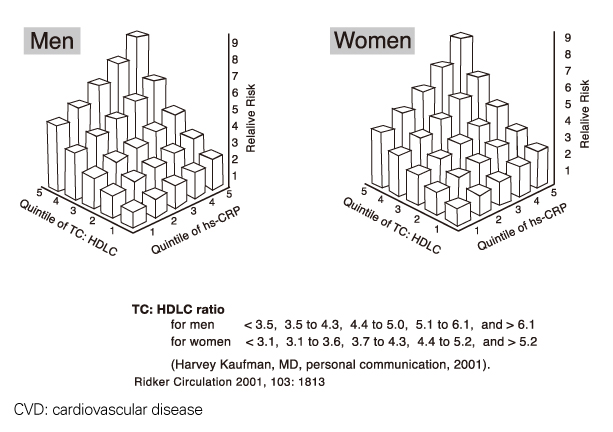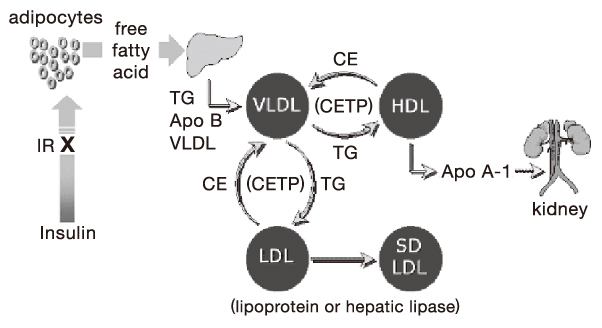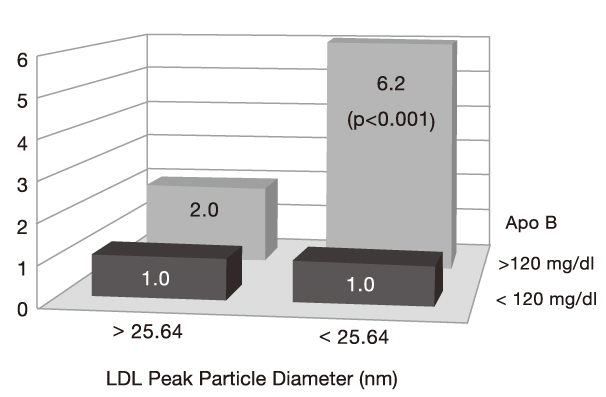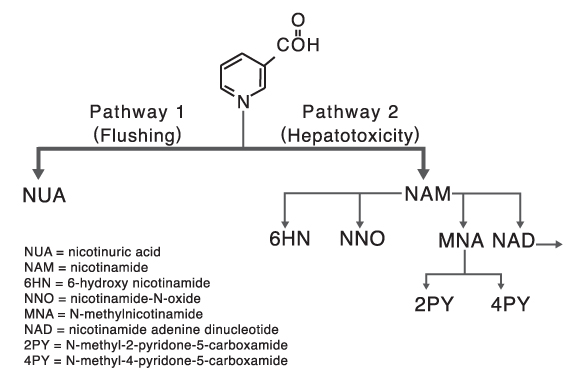J Korean Med Assoc.
2009 Mar;52(3):299-311. 10.5124/jkma.2009.52.3.299.
Control of Dyslipidemia
- Affiliations
-
- 1Department of Internal Medicine, University of Ulsan College of Medicine, Korea. steadyhan@amc.seoul.kr
- KMID: 2187981
- DOI: http://doi.org/10.5124/jkma.2009.52.3.299
Abstract
- Lipid particles, which can be synthesized in the liver or absorbed through the terminal ileum, are indispensable for maintaining homeostasis. Inadequate life styles together with certain types of genetic background can induce and aggravate the condition of dyslipidemia. The personal status of inflammation, which is reflected by the serum C-reactive protein level, and the status of insulin resistance are considered as emerging risks for cardiovascular diseases. Therefore, together with aggressive management of correctable major risks, maintaining ideal lifestyles may be helpful to prevent the event of cardiovascular diseases. The most important goal of managing dyslipidemic conditions is to reach an ideal level of lipid profile, and aggressive drug management can be tried where indicated.
MeSH Terms
Figure
Reference
-
1. Thompson GR. A handbook of hyperlipidemia. 1990. London: Current Science Ltd.2. Hovingh GK, de Groot E, van der Steeg W, Boekholdt SM, Hutten BA, Kuivenhoven JA, Kastelein JJ. Inherited disorders of HDL metabolism and atherosclerosis. Curr Opin Lipidol. 2005. 16:139–145.
Article3. Brousseau ME, Schaefer EJ, Wolfe ML, Bloedon LT, Digenio AG, Clark RW, Mancuso JP, Rader DJ. Effects of an inhibitor of cholesteryl ester transfer protein on HDL cholesterol. N Engl J Med. 2004. 350:1505–1515.
Article4. National Cholesterol Education Program (NCEP) expert panel on detection, evaluation, and treatment of high blood cholesterol in adults (Adult Treatment Panel III). Third report of the National Cholesterol Education Program (NCEP) Expert panel on detection, evaluation, and treatment of high blood cholesterol in adults (Adult Treatment Panel III) final report. Circulation. 2002. 106:3143–3421.15. Danesh J, Wheeler JG, Hirschfield GM, Eda S, Eiriksdottir G, Rumley A, Lowe GD, Pepys MB, Gudnason V. C-reactive protein and other circulating markers of inflammation in the prediction of coronary heart disease. N Engl J Med. 2004. 350:1387–1397.
Article6. Ridker PM, Danielson E, Fonseca FA, Genest J, Gotto AM Jr, Kastelein JJ, Koenig W, Libby P, Lorenzatti AJ, MacFadyen JG, Nordestgaard BG, Shepherd J, Willerson JT, Glynn RJ. JUPITER Study Group. Rosuvastatin to prevent vascular events in men and women with elevated C-reactive protein. N Engl J Med. 2008. 359(21):2195–2207.
Article7. Griffin BA, Caslake MJ, Yip B, Tait GW, Packard CJ, Shepherd J. Rapid isolation of low density lipoprotein (LDL) subfractions from plasma by density gradient ultracentrifugation. Atherosclerosis. 1990. 83:59–67.
Article8. Cho HK, Jang YS. Small dense LDL and atherosclerotic disease. Korean Journal of Lipid and Atherosclerosis. 2003. 2:360–315.9. Piepho RW. The pharmacokinetics and pharmacodynamics of agents proven to raise high-density lipoprotein cholesterol. Am J Cardiol. 2000. 86:35L–40L.
Article
- Full Text Links
- Actions
-
Cited
- CITED
-
- Close
- Share
- Similar articles
-
- The current state of dyslipidemia in Korean children and adolescents and its management in clinical practice
- Practical Approaches to Managing Dyslipidemia in Patients With Metabolic Dysfunction-Associated Steatotic Liver Disease
- Dyslipidemia in Children and Adolescents: When and How to Diagnose and Treat?
- Screening and Management for Dyslipidemia in Korean Children and Adolescents
- Zebrafish as an Emerging Model for Dyslipidemia and Associated Diseases


